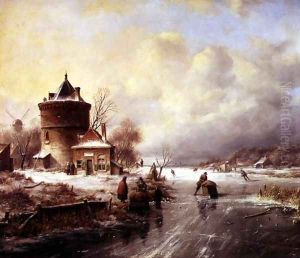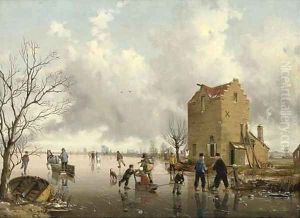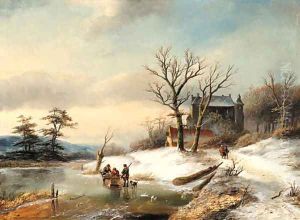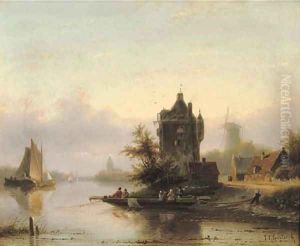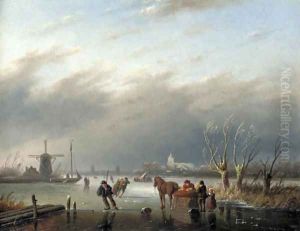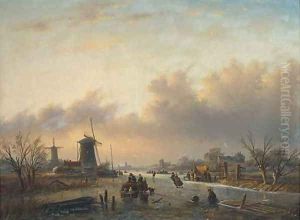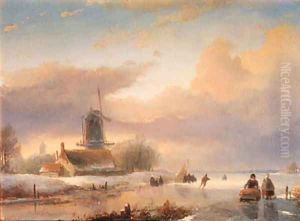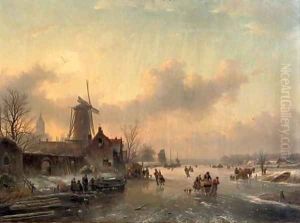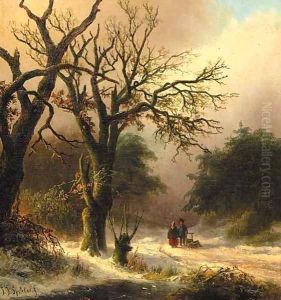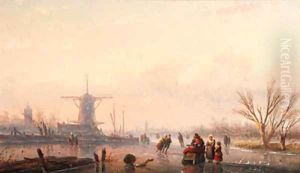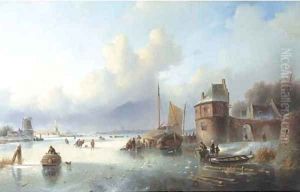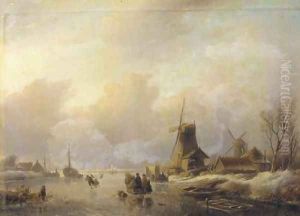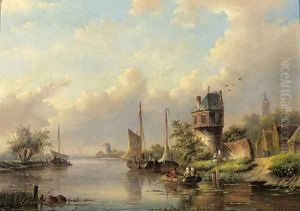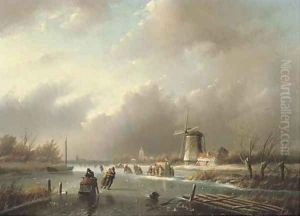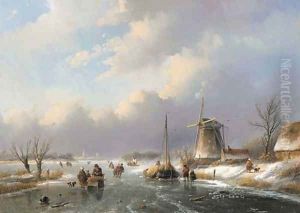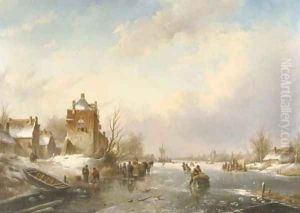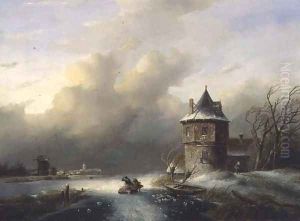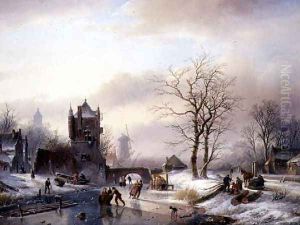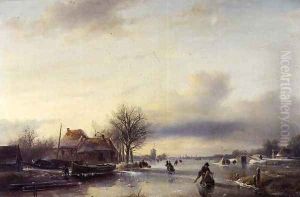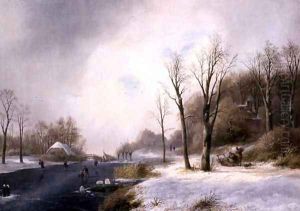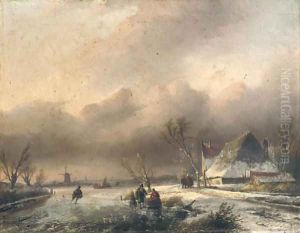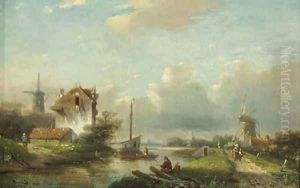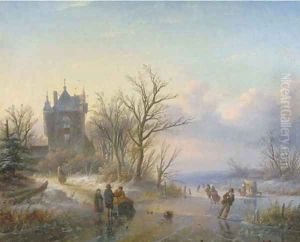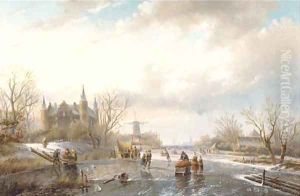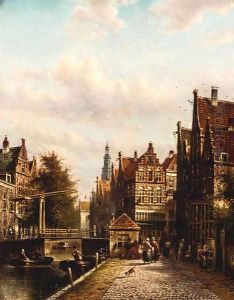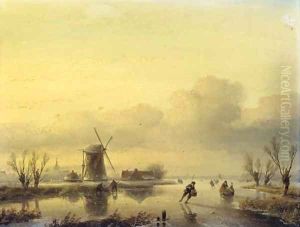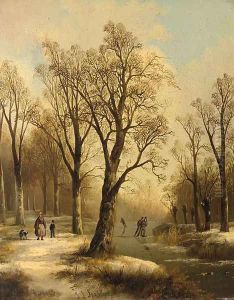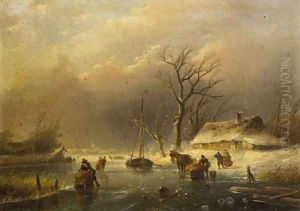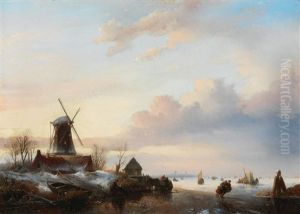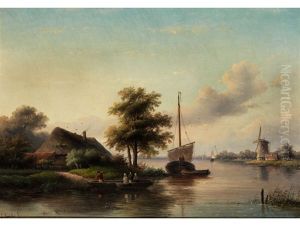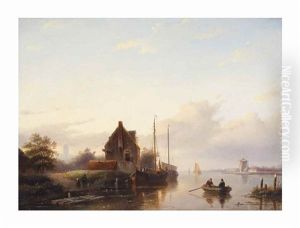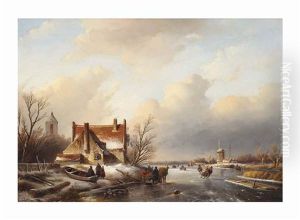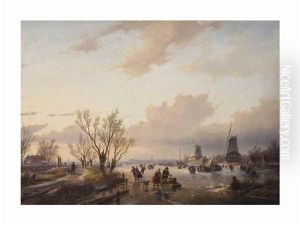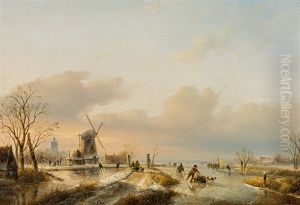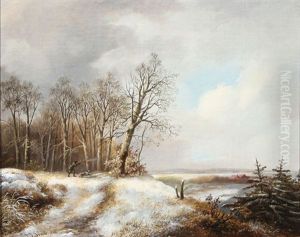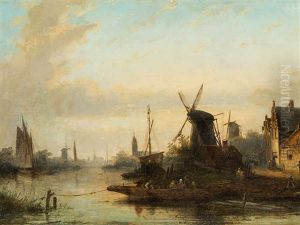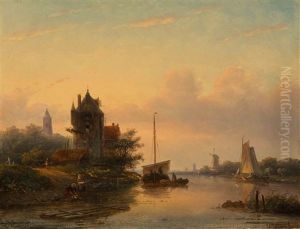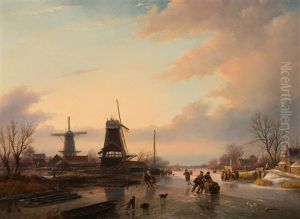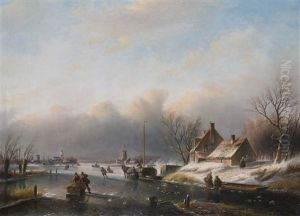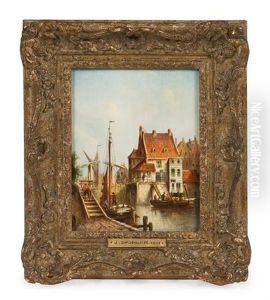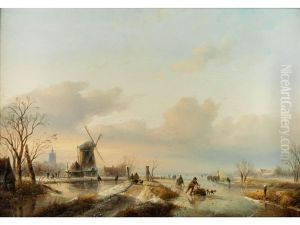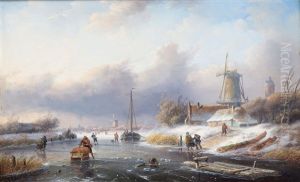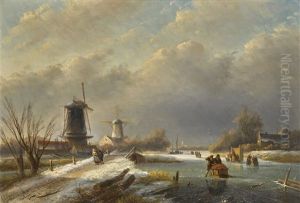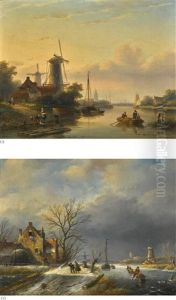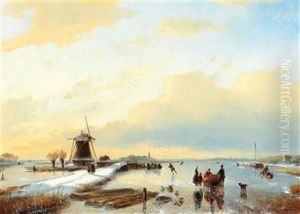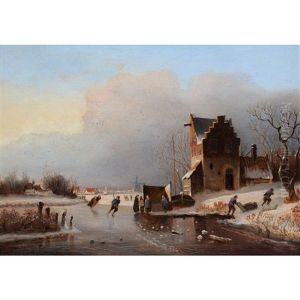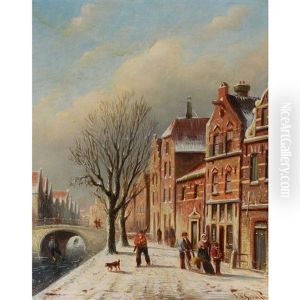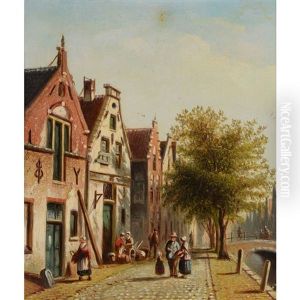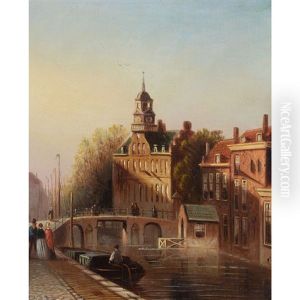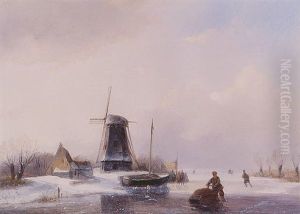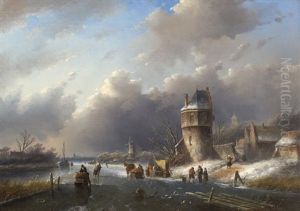Jan Jacob Spohler Paintings
Jan Jacob Spohler was a 19th-century Dutch landscape painter, born on December 7, 1811, in Nederhorst den Berg, Netherlands. He was known for his captivating depictions of the Dutch countryside, characterized by meticulous attention to detail and a harmonious color palette.
Spohler was part of the second generation of Dutch Romantic painters. He received his initial art education from his father, Jacob Jan Coenraad Spohler, who was also a painter. Later, he continued his studies at the Amsterdam Academy under the tutelage of landscape painter Jan Willem Pieneman. His training included drawing from life, which was a common practice in art education at the time, and he developed a keen eye for capturing the intricate nuances of natural scenery.
Throughout his career, Spohler's work was influenced by the 17th-century Dutch landscape tradition, and he often depicted the serene and idyllic aspects of the Netherlands' rural settings. His paintings frequently featured scenes of waterways, windmills, and winter landscapes with skaters—a popular subject among Dutch artists. Spohler's ability to render light and atmosphere was particularly admired, and his landscapes exude a sense of tranquility and timeless beauty.
Spohler's works were well-received during his lifetime, and he exhibited at various art shows, including the Exhibition of Living Masters in the Netherlands. His paintings appealed to a broad audience and were collected both domestically and internationally.
Jan Jacob Spohler continued to paint throughout his life, capturing the picturesque landscapes of his homeland until his death on February 15, 1866, in Amsterdam. His legacy lives on through his art, which remains a testament to the enduring appeal of the Dutch landscape tradition and provides a window into the 19th-century Netherlands' natural environment.
